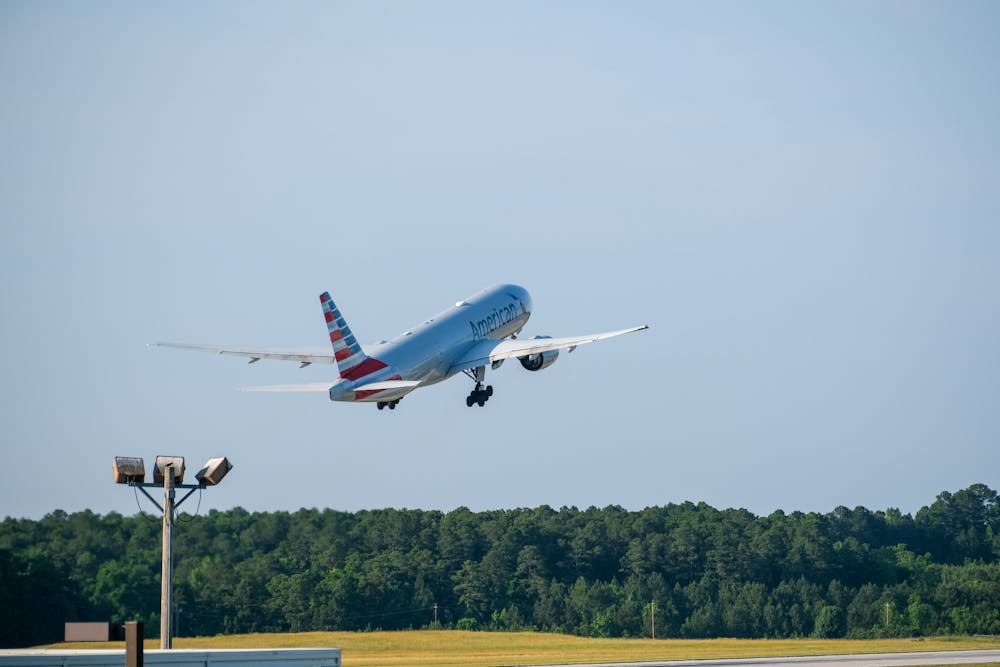The Undergraduate Assembly instituted a new airport pairings program for this year's spring break, encouraging students’ joint use of ridesharing services to reduce financial costs and carbon emissions upon their return to campus.
In previous years, the UA offered direct shuttle services to the Philadelphia International Airport for major holidays such as spring break, and students were responsible for securing their own transportation back to campus. The UA’s new initiative paired students with similar arrival plans, allowing them to coordinate their return to campus in advance.
College sophomore and UA Dining, Housing, and Transit Director Shikhar Gupta spearheaded the initiative, suggesting that the UA test out a pilot shuttle program for return services for this year’s spring break.
“We received a lot of requests to get students back to campus, but there were different logistical issues,” Gupta said. “So, when brainstorming, we remembered how most Penn students hope to find other students at the airport to share their Uber or Lyft fare with. The hope was to connect these people who might not even know that they exist together.”
The UA paired students with a suitable travel companion, allowing them to coordinate a joint return to campus at a lower cost. After purchasing a ticket through the UA’s online platform, students returned to campus in an Uber or Lyft alongside their designated companion.
Gupta said that the initiative aimed to reduce carbon emissions associated with separate means of student transport, as well as help students feel more comfortable in their travel back to campus.
“We also wanted to recognize that for a lot of students, it’s also a matter of safety and feeling comfortable, especially for many female students at Penn," he said. "A lot of them might not feel particularly safe on the public chain, especially if it’s a late hour at night, so we wanted to keep that in mind when thinking about the inspiration of the project.”
In anticipation of spring break’s commencement, the UA sent a mass email to all students offering them a chance to sign up for the new program. Upon entering their flight return number, estimated arrival time, and designated arrival terminal into the link, the program then used an algorithm to pair students with similar return plans.
RELATED:
UA releases annual report for 50th session, highlighting transparency and accountability
Pulitzer Prize-winning author, physician Siddhartha Mukherjee named 2024 Commencement speaker
Engineering junior and UA Engineering representative Chandler Cheung, who designed the program’s algorithm, said that the process of pairing students based on the compatibility of their travel plans was partially inspired by the algorithm used for the Penn Marriage Pact.
The algorithm matched people whose schedules overlapped within a designated time frame of 30 minutes, according to Cheung.
“At first there were some small intricacies that we had to figure out such as whether or not people planned to pick up luggage and then also considering flight delays, but we were also able to do manual checks of whether pairings would be correct and work out between specific pairs of people," he said.
Cheung hopes to improve upon the current algorithm and address the pilot’s shortcomings.
“One thing we want to do moving forward is bundle this with the airport shuttle services that people use when leaving for break,” Cheung said. “In the future, we want to try to release [the service] earlier, so that people can have more time to plan out flights with others early on. This means that there will be more people returning within the same time frame who are able to better coordinate their ridesharing services too.”
Out of the 50 students who signed up, a portion of students were unable to be matched to a partner due to conflicting arrival times, according to the UA. These students were recommended alternative methods for cheaper transportation, such as the SEPTA airport line, instead.
As the initiative continues to focus on resolving these issues, the program is set to remain open to students for the upcoming school year. College junior and UA Community Engagement and Sustainability Director Hannah Liu said that she hopes to improve the project’s accessibility and feasibility for a broader range of students in the future.
“We plan to pass the program down to the new leadership and encourage them to take charge, but that doesn’t mean that it’s only within the UA,” Liu said. “We are more than happy to welcome people to the team to make this program more accessible and cost effective in the future.”









